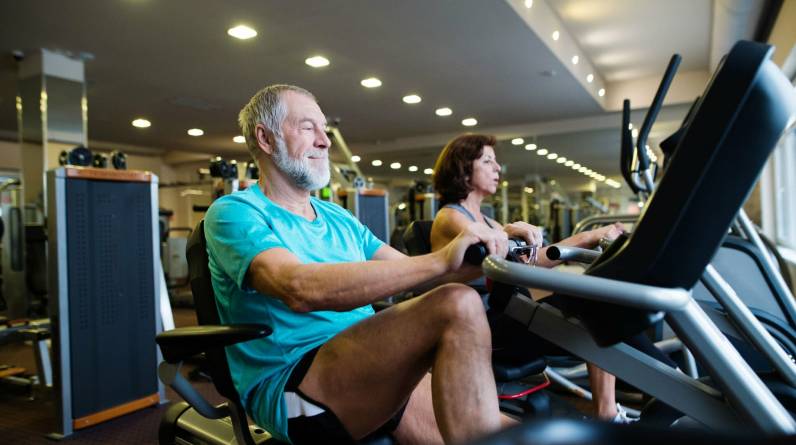
Have you ever wondered if there is an alternative way to manage chronic pain apart from medications? Structural Integration, or SI, may be the answer you are looking for! In this article, we will discuss the basics of SI and how it can help to improve your mobility and ease pain.
What is Structural Integration (SI)?
Structural Integration (SI) is a system of manual therapy designed to align and balance the body’s myofascial structure with gravity. The goal of structural integration therapy is to improve the body’s overall function and movement patterns. The SI process begins with an initial assessment, during which the practitioner will evaluate your posture, alignment, and range of motion. From there, a series of hands-on sessions will be prescribed, each building on the previous one.
During an SI session, the practitioner will use their hands to apply pressure and release restrictions in the tissues. This process can be slightly uncomfortable as areas of tension are released, but should not be painful.
After completing a series of SI sessions, most people report feeling lighter, taller, and more relaxed in their bodies. Many also notice an improvement in their mobility and a decrease in pain or discomfort.
The Benefits of Structural Integration SI
When it comes to improving your mobility and easing pain, there are few treatment options that are as effective as Structural Integration (SI). SI is a type of bodywork that uses gentle, hands-on techniques to realign the body’s connective tissues. This can help to improve your posture, increase your range of motion, and reduce pain throughout the body.
Some of the specific benefits of Structural Integration SI include:
Improved posture: SI can help to correct imbalances in the body that lead to poor posture. This can result in less pain and greater ease of movement.
Increased range of motion: The realignment of connective tissues can help to increase your range of motion. This can lead to improved mobility and function.
Reduced pain: By correcting imbalances in the body, SI can help to reduce or eliminate pain throughout the body. This includes both acute and chronic pain.
How Does SI Work?
When most people think of massage, they think of relaxation. While SI can certainly help you relax, its primary focus is not on relaxation, but on structural integration of the body. In other words, SI works to improve your body’s alignment and overall functioning.
One way SI does this is by lengthening and re-aligning the major myofascial (muscular) lines of the body. These myofascial lines are like taut ropes that run through our muscles, tendons, and ligaments. Over time, these lines can become shortened and twisted due to poor posture, injury, or repetitive motions. This can lead to pain, stiffness, and reduced mobility.
SI Massage can help to lengthen and re-align these myofascial lines, restoring balance to the body and improving overall function. This can result in reduced pain, increased mobility, and improved posture.
Preparation for an SI Session
Preparation for an SI session may vary depending on the practitioner, but there are some general things to keep in mind. First, it is important to wear comfortable clothing that does not restrict movement. Second, be prepared to move and be touched in ways that may be unfamiliar or uncomfortable at first. Third, trust the process and your practitioner – this is a safe space to explore your body and learn new things about yourself. Finally, take some time after the session to integrate the experience – drink plenty of water, journal, or just take some deep breaths.
Types of Movements and Techniques Used in SI
There are a variety of movements and techniques used in Structural Integration (SI). The most common are:
Rolfing: Rolfing is a form of deep tissue massage that is used to release the connective tissue and realign the body. It is often used to help with chronic pain, posture, and range of motion issues.
Myofascial Release: Myofascial release is a type of soft tissue therapy that uses gentle pressure and stretching to release the fascia (connective tissue) that surrounds the muscles. This can help to reduce pain, increase range of motion, and improve overall mobility.
Trigger Point Therapy: Trigger point therapy is a type of massage that targets specific areas of muscle tension (trigger points). This can help to relieve pain and improve range of motion.
Swedish Massage: Swedish massage is a gentle form of massage that uses long strokes and kneading to relax the muscles. It can help to increase circulation, ease pain, and improve overall mobility.
How Often Should You Receive SI Sessions?
Structural Integration (SI) is a form of bodywork that can be used to improve mobility and ease pain. The goal of SI is to restore the body’s natural alignment and balance. SI sessions are usually given in a series of 10–12 sessions, once per week.
Alternatives to Structural Integration
There are a number of alternative therapies that can be used to help improve mobility and ease pain. These include:
- Massage therapy: This can help to loosen tight muscles and improve circulation.
- Chiropractic care: This can help to align the spine and improve range of motion.
- Physical therapy: This can help to strengthen weak muscles and improve flexibility.
- Acupuncture: This can help to release endorphins and reduce inflammation.
- Yoga: This can help to lengthen tight muscles and improve balance.
Conclusion
Structural Integration (SI) is a powerful tool when it comes to improving your mobility and easing pain. It can provide relief from chronic pain, improve posture, reduce inflammation and tension in the body, increase range of motion and flexibility, as well as help with overall wellbeing. SI combines manual therapy techniques with movement education strategies to restore balance throughout the entire body so that you can move freely without limitation or discomfort. If you’re looking for an effective solution for reducing your pain and improving your mobility, consider trying Structural Integration today!






